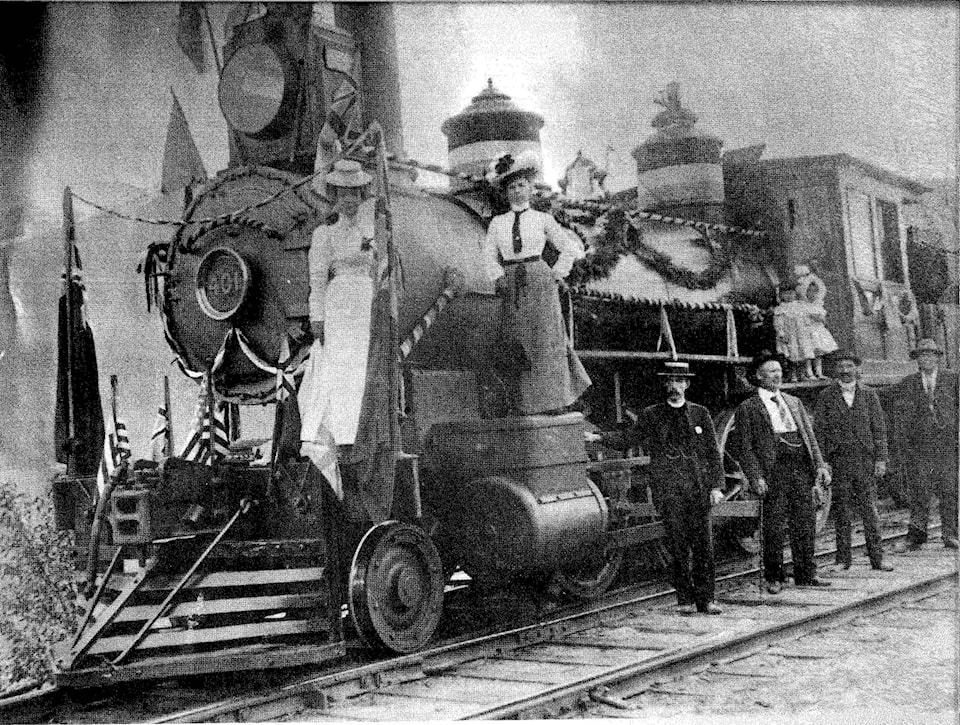ANGUS SCHROFF
Special to the News
Steam billowing out of the smokestack. Wheels grinding against the rails. The tell-tale chug chug chug of the steam engine and the clack-clack-clack of the tracks combine with a hundred other mechanical noises to coalesce into the thundering, yet romantic sound that can only come from a steam locomotive. Though the railroads of the Kootenays now stand as silent as the waterfront in wintertime, at one time they lived side by side with the sternwheelers as the lifelines of our community.
In 1891, a major silver claim was made on Payne Mountain. This was the genesis of what would become Sandon, and was one of the biggest of the many claims made around the Kootenay region. Nakusp was not founded on such a mine, but on the principle of being an ideal landing spot for transport of ore coming out of Slocan, and for prospectors and workers coming in from the lakes.
The first years, though, were plagued with the hardships associated with cutting a town out of the wilderness. Nakusp’s only motorized transports were the steamers on the water; the overland trail to Slocan Lake was native work, and insufficient for pack trains and the sheer volume of people and cargo that was making its way through the area. It was clear; Nakusp needed a rail connection. In fact, the CPR had sent surveyors out as early as 1891, and in early ‘92 they came back with cost estimates.
Work on the railroad, set to span from Nakusp to Three Forks, didn’t begin until 1893, with a total budget of $1 million. The Canadian government only began to track the consumer price index in 1914, but using $1 million from that year comes out to $21,852,459 in 2018. This should give one a sense of the scale of the CPR’s operations at the time, especially considering this was a connecting line only 38 miles in length.
Those 38 miles, though, were rough work. Around a thousand men worked the line, and over a million feet of timber was processed by Genelle’s mill for bridges alone. They laid steel at a rate of a mile per day, but unfortunately their work could not outrun the fickle nature of the market. By 1893, the price of the very silver that was the impetus for the line had dropped from a dollar to fifty cents an ounce. Still, other ores in the region left the railroad an attractive enough prospect to continue, and by 1894 the railway was completed. What’s more, the CPR had competition.
From east of Sandon came the Kaslo & Slocan Railway, backed by the American Great Northern Railway. The K&SR used narrower three foot gauge tracks – cheaper to build but incompatible with the floats that took cars across the lakes. The K&SR would be the CPR’s strongest competition in the area, though it would eventually succumb to the CPR’s standardized tracks and financial backing. Not before some sparks flew, though, as a K&SR crew who were feuding with a CPR crew over the location of a CPR station tore it down while the CPR men were out to lunch!
That’s a story for another time, though. All in all, the railways provided an essential lifeline to the isolated, mountainous Kootenays, and their industries. Beyond that, they were the fastest route for passengers and any types of personal goods until the development of more suitable roads for automotive travel decades later. Though there may be few traces of the bustling activity around Nakusp and its railway line today, you can still see the evidence; on the hiking trails created when railroads were decommissioned, at the rebuilt train near our park, or at the museum itself.
For further perusal of the topics of this article, may we recommend Robert D. Turner’s West of the Great Divide, a comprehensive history of the CPR from its inception until the mid 80’s, and Port of Nakusp, one of late local historian Milton Parent’s many wonderful books. Both were referenced extensively during the writing of this article.
